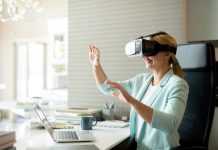With Starbucks in the news recently, there has been more attention on diversity and inclusion training for employees, particularly Unconscious Bias training. As I observed this growing topic of discussion, I could not help but engage and ask my friends and peers this question, “What has been your experience with diversity and inclusion or unconscious bias training?”
As someone who was on the debate and forensics team in high school and college, I like to engage in respectful, yet thought-provoking conversations about issues such as this. I was surprised by the number of people (who are not in the Human Resources/Talent Development field) who stated they had a poor experience with diversity and inclusion training or felt that, more often than not, these training efforts were solely to protect the company or organization.
A few responses included (anonymous, primary source data):
- “In my experience, it’s usually a formality to protect the company from individuals mishandling the workplace. But I also think it does ward off some misbehavior and set a low bar precedence. It’s never the training; it’s the people. The culture.”
- “It’s not meant to change minds. Diversity training is meant to cover the company. If someone does something that goes against the training received, they can be fired and the company cannot be sued. Again, it won’t change a person, but it might have them think twice before acting and losing their job.”
- “I train in Diversity Inclusion. Everyone has to be able to have a seat at the table for it to work!”
Does diversity and inclusion training work to greatly reduce the number of employees who harbor (or demonstrate) prejudices?
Yes! Training CAN and DOES have an impact! But this must be done as part of a larger strategy! No more calling in a trainer at the last minute to “put out fires.” Let’s work on creating an inclusive culture, year-round!
A full-day, Unconscious Bias training—as Starbucks is planning—is a good way to begin the conversation about diversity and inclusion in the workplace. With the right mix of reflection, dialogue, and learning activities, many people will start to peel off layers of bias they didn’t know existed. (For those of you who are also educators or have children, think about the line in the movie, Shrek, “Ogres are like onions.”) However, in addition to training or learning and development efforts, we must consider formal policies, procedures, and/or practices that are in place within our organizations that ensure an inclusive environment.
- What do your recruiting and hiring efforts look like? Are your recruiters and hiring managers considering candidates from all backgrounds? Are you ensuring diversity of thought? What is the makeup of those you mentor and promote?
- Does your organization have informal, voluntary opportunities for employees to get to know one another and build relationships such as company-sponsored picnics, sporting events, happy hours, or lunch and learns)? Some companies have employee resource groups (ERGs) or communities of practice (COPs).
The Harvard Business Review (HBR) published an article, “Deloitte’s Radical Attempts to Reframe Diversity.” This article is insightful and uses data to show how the most common diversity programs do not work.
So what are some efforts that do work?
- Diversity Taskforces
- Cross-Training Managers
- Self-Managed Teams
- College Recruitment Targeting Programs
- Mentoring
Want to chat about diversity and inclusion training for your organization? E-mail Yolanda Fraction, M.Ed., at fractionlearning@gmail.com.
With a graduate degree in adult and organizational learning and more than 12 years of experience in the learning field, Yolanda Fraction, M.Ed., is passionate about creating social and behavioral change!




